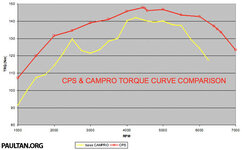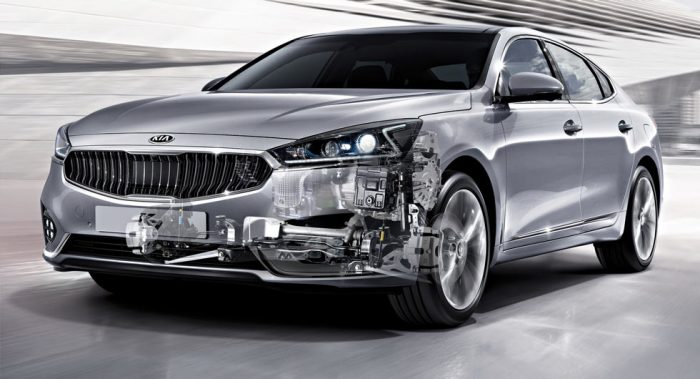Extracted from Paul.Org's website. To see more click below,
http://paultan.org/archives/2008/02/06/proton-waja-campro-16-premium-cps-details/
-------------------
This is how the new Proton Campro CPS works. The CPS system integrated both cam profile switching (CPS) and a variable intake manifold (VIM). VIM switches between a long intake manifold at low RPMs and a short intake manifold at higher RPMs. According to Proton, a longer intake manifold is used at low RPMs to achieve slower air flow; this promotes better mixing with fuel. The short intake manifold allows more air in faster. This is beneficial at high RPMs. This seems to be slightly different compared to the usual VIM system where intake manifold width is also varied to control air velocity, and velocity tries to be maximised, but the idea behind the CPS VIM seems to be not wanting the air to go in as fast as possible at low revs to promote air-fuel mixture? Whatever it is, it seems to work, as the VIM does not stand alone but works with all the other engine systems together over different RPMs.
The CPS system uses a switching tappet and a trilobe camshaft to switch between two different cam profiles. One cam profile provides low valve lift, while the other cam profile has a high valve lift. The low valve lift cam profile is used at engine speeds of under 3,800rpm to maintain idling smoothness and ensure lower emissions, while the high lift cam profile is used when the engine is spinning more than 3,800rpm to improve peak horsepower and torque.
Using this two performance-improving systems, Campro CPS engine basically runs in three modes at any one time:
Engine Speed CPS VIM
0 to 3,800rpm Low Lift Long Runner
3,800rpm to 4,800rpm High Lift Long Runner
Above 4,800rpm High Lift Short Runner
The result is 125 horsepower (93kW) at 6,500rpm and 150Nm of torque at 4,500rpm compared to the non-CPS Campro’s 110 horsepower (82kW) at 6,000rpm and 148Nm of torque at 4,000rpm. Engine displacement is 1,597cc, bore and stroke is 76mm x 88mm and the compression ratio is 10.0:1. To handle the higher power and torque output, the Campro CPS engine has an additional oil cooler.
Bump: Extracted from Paul.Org's website. To see more click below,
http://paultan.org/archives/2008/02/06/proton-waja-campro-16-premium-cps-details/
-------------------
This is how the new Proton Campro CPS works. The CPS system integrated both cam profile switching (CPS) and a variable intake manifold (VIM). VIM switches between a long intake manifold at low RPMs and a short intake manifold at higher RPMs. According to Proton, a longer intake manifold is used at low RPMs to achieve slower air flow; this promotes better mixing with fuel. The short intake manifold allows more air in faster. This is beneficial at high RPMs. This seems to be slightly different compared to the usual VIM system where intake manifold width is also varied to control air velocity, and velocity tries to be maximised, but the idea behind the CPS VIM seems to be not wanting the air to go in as fast as possible at low revs to promote air-fuel mixture? Whatever it is, it seems to work, as the VIM does not stand alone but works with all the other engine systems together over different RPMs.
The CPS system uses a switching tappet and a trilobe camshaft to switch between two different cam profiles. One cam profile provides low valve lift, while the other cam profile has a high valve lift. The low valve lift cam profile is used at engine speeds of under 3,800rpm to maintain idling smoothness and ensure lower emissions, while the high lift cam profile is used when the engine is spinning more than 3,800rpm to improve peak horsepower and torque.
Using this two performance-improving systems, Campro CPS engine basically runs in three modes at any one time:
Engine Speed CPS VIM
0 to 3,800rpm Low Lift Long Runner
3,800rpm to 4,800rpm High Lift Long Runner
Above 4,800rpm High Lift Short Runner
The result is 125 horsepower (93kW) at 6,500rpm and 150Nm of torque at 4,500rpm compared to the non-CPS Campro’s 110 horsepower (82kW) at 6,000rpm and 148Nm of torque at 4,000rpm. Engine displacement is 1,597cc, bore and stroke is 76mm x 88mm and the compression ratio is 10.0:1. To handle the higher power and torque output, the Campro CPS engine has an additional oil cooler.








